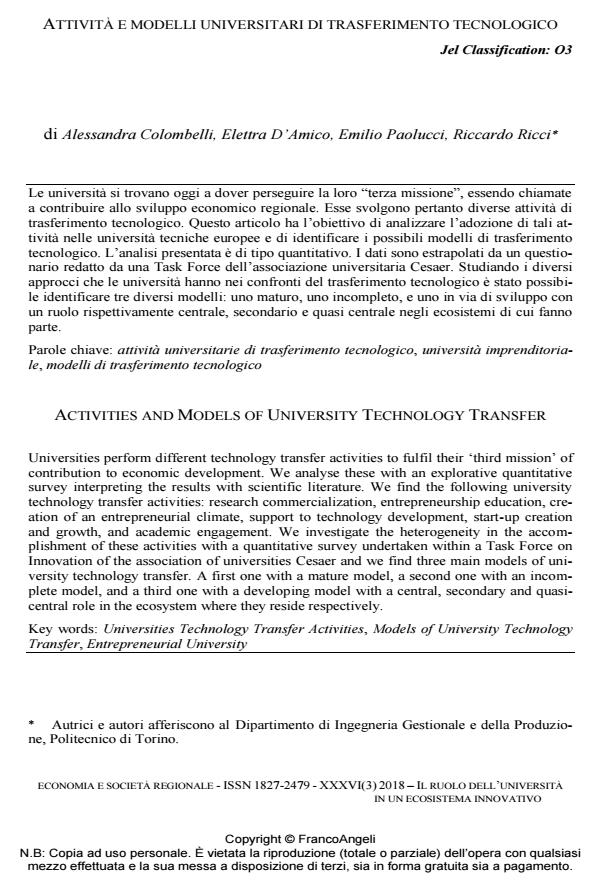Activities and models of university technology transfer
Journal title ECONOMIA E SOCIETÀ REGIONALE
Author/s Alessandra Colombelli, Elettra D’Amico, Emilio Paolucci, Riccardo Ricci
Publishing Year 2018 Issue 2018/3
Language Italian Pages 18 P. 10-27 File size 409 KB
DOI 10.3280/ES2018-003002
DOI is like a bar code for intellectual property: to have more infomation
click here
Below, you can see the article first page
If you want to buy this article in PDF format, you can do it, following the instructions to buy download credits

FrancoAngeli is member of Publishers International Linking Association, Inc (PILA), a not-for-profit association which run the CrossRef service enabling links to and from online scholarly content.
Universities perform different technology transfer activities to fulfil their ‘third mission’ of contribution to economic development. We analyse these with an explorative quantitative survey interpreting the results with scientific literature. We find the following university technology transfer activities: research commercialization, entrepreneurship education, creation of an entrepreneurial climate, support to technology development, start-up creation and growth, and academic engagement. We investigate the heterogeneity in the accomplishment of these activities with a quantitative survey undertaken within a Task Force on Innovation of the association of universities Cesaer and we find three main models of university technology transfer. A first one with a mature model, a second one with an incomplete model, and a third one with a developing model with a central, secondary and quasicentral role in the ecosystem where they reside respectively.
Keywords: Universities Technology Transfer Activities, Models of University Technology Transfer, Entrepreneurial University
Alessandra Colombelli, Elettra D’Amico, Emilio Paolucci, Riccardo Ricci, Attività e modelli universitari di trasferimento tecnologico in "ECONOMIA E SOCIETÀ REGIONALE " 3/2018, pp 10-27, DOI: 10.3280/ES2018-003002